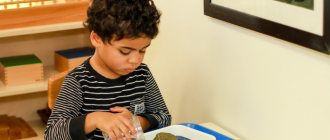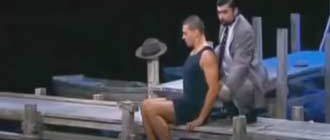Taxonomy of the animal world
The animal kingdom is divided into subkingdoms, types, classes, families, genera, and species. Animals belonging to the same genus are similar to each other, and animals of the same species can produce fertile offspring. Humans belong to the primate order of mammals and are grouped into one species - Homo sapiens.
Scheme of the development of the animal world. 1—protozoa. 2—coelenterates. 3—flatworms. 4 - roundworms. 5 - ringed worms. 6 - shellfish. 7 - arthropods. 8—echinoderms. 9— chordates
hummingbird bird
Hawkmoth butterfly
Herbivores contribute to balance in the biotope
Looking for food
Because animals feed on other organisms or their organic waste products, they must move around in search of food. For movement, animals have special adaptations, for example, pseudopods in amoebas, flagella in flagellates, cilia in ciliates and free-living flatworms, legs in mollusks, wings and legs in insects, limbs in amphibians, reptiles and mammals. And birds, along with their limbs, have two wings.
Example of a food chain
Lesson notes for the senior group. Animal world
Summary of the lesson “Animal World” for children of the senior group
Author: Slobodskaya Angela Olegovna. Objectives: 1. Expand knowledge about domestic and wild animals. 2. Distinguish between different animals according to their characteristic features, continue to familiarize children with the classification of animals (wild, domestic). 3. Name baby animals. 4. Develop emotional responsiveness, aesthetic perception of the surrounding world, and form an ecological culture. 5. Foster a caring attitude towards living nature. Develop aesthetic perception. Preliminary work: looking at illustrations, books, drawing and sculpting animals, reading books, memorizing poems, guessing riddles.
Progress of the lesson:
There is a recording of the voices of domestic animals (cows, horses, pigs, goats) - which animals’ voices do you recognize?
(children's answers). - What are these animals called in one word? (children's answers). The teacher asks you to remember what other pets there are? (children's answers). Why are they called pets? (children's answers). What benefits do they bring? (children's answers). There is a recording of the voices of wild animals (bear, wolf, hare) - what animal voices do you recognize? (children's answers). - What are these animals called in one word? (children's answers). Why are they called wild? (children's answers). — Tell me, what are the characteristics of animals? (they have paws, a tail, a muzzle, fur) The teacher suggests a musical break. Song "Zverobika". The cat sat down on the window and began to wash her ears with her paw. After watching her a little, we can repeat her movement. Chorus: One, two, three, come on, repeat, Three, four, five - repeat again. One, two, three, come on, repeat, Three, four, five, repeat again. Very good. A snake crawls along a forest path, like a ribbon slides along the ground. And we can depict this movement for you with our hands. Chorus:
stands all day in the swamp And catches frogs with its beak.
It’s not at all difficult to stand like that for us, for trained guys. Chorus:
The monkey came down from the branch to us, The monkey must be respected.
After all, monkeys are our ancestors, and children, we must imitate our ancestors. Chorus:
There are a lot of monkeys, cats and animals in the world, But, man, you are a friend of nature And you must know the habits of all animals.
Chorus
- And now I’ll tell you riddles, if the answer is correct, then a card with a picture of this animal will be posted.
Riddles: 1. Shaggy, mustachioed, drinks milk, sings songs. (cat) 2. She doesn’t speak, doesn’t sing, but who goes to the owner, She lets him know. (dog) 3. In front there is a snout, in the back there is a hook, in the middle there is a back, on the back there is a bristle. (pig) 4. Neither the lamb nor the cat Wears a fur coat all year round. The fur coat is gray for summer, for winter - a different color. (hare) 5. Like a Christmas tree, covered in needles. (hedgehog) 6. Fluffy tail, golden fur lives in the forest, steals chickens in the village. (fox) 7. Who wanders around in the cold winter, angry and hungry. (wolf) 8. The owner of the forest, wakes up in the spring, And in winter, to the howl of a blizzard, Sleeps in a snowy hut. (bear) 9. He’s waiting for me on the road. He beats his hoof at the gate. His mane plays in the wind. Lush, fabulously beautiful. I’ll quickly jump onto the saddle and fly clop-clop-clop. (horse) 10. She is big, with horns and hooves on her legs. The tail is like a panicle. It eats hay and gives milk. (cow) - Guys, let's count how many pets there are? Count it. (Children count at the blackboard). Game "Name the Cubs" . (One-many) Game “Who lives where? " (Figures of domestic and wild animals are laid out on the table. 2 children are called. One child will put the wild animals in the forest, and the other child - in the hut). The teacher uses a “magic” wand to transform children into forest dwellers. “And now you and I will close our eyes and turn into forest dwellers.” Physical education One-squat, two-jump This is a rabbit exercise, And when the foxes wake up, they like to stretch for a long time. Be sure to yawn and wag your tail. And the wolf cub arches its back, And jumps lightly, The cub bear, with his paws spread wide, First one, then both together, Marks time for a long time. And for those who don’t have enough exercise, it starts all over again. - Fine! And now I again turn you into our obedient children (close our eyes). Working at a desk. Give the children sheets of paper and pens. — Guys, let’s listen to the task: “Animals (wild and domestic) are drawn here.” Wild animals need to be circled, and domestic animals need to be led to the barn (hut) with an arrow.” The children do the work. The teacher walks among the children and watches how they complete the task. (Calm music sounds). Educator : Thank you guys, it’s very interesting and fun to be with you. Now, tell me, what would happen if all the animals on earth disappeared? Summarizing the children's answers, the teacher talks about the need for all animals in nature. Educator: And now our children will read B. Zakhoder’s poem “Everyone in the World is Needed.” Summary of the lesson: “What animals did we talk about? (Children's answers). Today you all tried very hard and answered well. Well done! Let's say "Thank you" to each other!
We recommend watching:
Summary of educational activities in the senior group “Journey to a Fairy Tale” Summary of a mathematics lesson for children of the senior orthopedic group Summary of educational and gaming activities in the senior group in the section of the “Childhood” program Thematic day in kindergarten “Animal Day”
Similar articles:
Lesson in the senior group of kindergarten on the topic of February 23
Lesson notes for children of senior preschool age. Topic: Invisible air
Summary of organized educational activities for children of the senior group
Notes for mathematics classes in the senior group
Lesson summary on the topic “Reserve” in the senior group
How are animals different from plants?
All animals have common characteristics: a special cellular structure and the ability to feed, breathe, grow, develop and reproduce. The internal structure of animals is more complex than that of plants.
Animals are endowed with a nervous system that regulates their relations with the outside world, while plants depend on the conditions of their existence and, above all, on factors such as light and gravity. Both of them need water and minerals. However, plants obtain them directly from the soil, and animals mainly from food and from water bodies.
Plants use sunlight as their main source of energy, with the help of which they synthesize substances necessary for life. Animals use plants as a source of energy, regardless of whether they eat plants or animals, which, in turn, eat plants.
Animals and Plants: Key Differences
| Characteristic | Animals | Plants |
| Movement | Mobile, which is necessary for obtaining food. Some animals lead an attached lifestyle | Immobile, the seeds of many plants are carried by the wind, single-celled algae are carried by water currents |
| Nutrition | Heterotrophs - feed on other living organisms | Autotrophs - synthesize organic substances through photosynthesis. Carnivorous plants are adapted to additional heterotrophic nutrition |
| Irritability | Regulated by hormones and the nervous system. Quick response to stimuli | Regulated by hormones; there is no nervous system. Slowly respond to a stimulus, most often with growth reactions, with the exception of carnivorous plants |
| Selection | Most multicellular organisms have special excretory organs, in particular for the excretion of nitrogenous substances | There are few excretory products, there are no special organs |
| Height | Of the whole body | Limited to certain areas in which meristems are located (in multicellular plants) |
Animal pests
Animals can also cause harm. Among them are many parasites of humans and domestic animals, as well as blood-sucking insect species that spread various diseases. Thus, ticks carry the pathogens of tick-borne encephalitis, and malaria mosquitoes carry malaria. Poisonous spiders (karakurt, tarantula), insects (bumblebee, hornet), snakes (viper, cobra) can threaten the health and even the life of humans and animals.
Quite a large number of rodents, insects, mites, and roundworms feed on cultivated plants, reducing their yield. Food supplies can be damaged by barn mites, mouse-like rodents and other animals.
Tarantula is a large poisonous spider that lives in hot, dry climates
The role of animals in the biosphere
The function of animals in the biosphere is that they participate in the cycle of substances and maintain it in a state of equilibrium. By consuming plants, animals stabilize biomass production. By carrying pollen, spores, and plant seeds, animals contribute to their reproduction. More than 80% of flowering plants cannot self-pollinate. Insects and birds come to their aid in this.
Sea creatures
Some species of marine animals, in particular mollusks, are capable of concentrating certain chemical elements in their exoskeleton. This plays an important role in stabilizing the level of mineral compounds (salts) in the waters of lakes, rivers, seas and the World Ocean as a whole. Currently, a person receives up to 10% of animal proteins only from fish and seafood.
“Differentiation of wild and domestic animals”
Section “Formation of lexical and grammatical categories.”
Goals:
1. Consolidate and clarify knowledge about domestic and wild animals, and activate children’s vocabulary on the topic.
2. Continue learning to form possessive adjectives from a noun.
3. To consolidate the formation of the genitive case of a noun in the singular.
4. Strengthen the agreement of the noun with possessive pronouns, with the numerals 2, 5.
5. Reinforce the use of the preposition “BECAUSE”
6. Strengthen the ability to select adjectives and present tense verbs for nouns.
7. Develop visual, auditory attention, memory, logical thinking.
Equipment: pictures of wild, domestic animals and their cubs, magnetic board, easel, subject pictures on the topic, cut-out pictures, tray, numbers 2, 5, numbered envelopes with tasks, medals for children, prizes for children.





